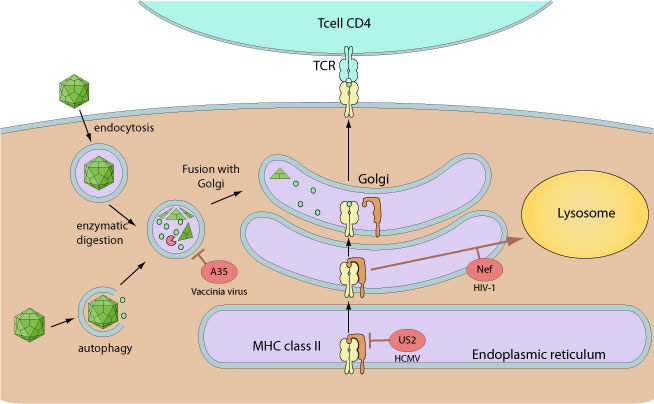Inhibition of host MHC class II molecule presentation by virus (kw:KW-1116)
MHC (major histocompatibility complex) Class II molecules are found only on a few specialized cells termed professional antigen-presenting cells (APCs). This group includes macrophages, dendritic cells and B cells.

Several viruses interfere with MHC class II peptide presentation to avoid recognition and increase virus survival. They can either "intercept" the loaded MHC class II molecules and retain them in the endoplasmic reticulum or target them to degradation. For instance, cytomegalovirus US2 destroys two components of the MHC class II pathway, HLA-DR-alpha and DM-alpha, preventing recognition by CD4+ T cells. HIV-1 Nef is able to disrupt MHC class II-mediated antigen presentation by a dual strategy that comprises a reduction in cell surface levels of peptide-loaded mature MHC class II molecules and a up-regulation of immature MHC class II molecules. Vaccinia virus A35 protein localizes to endosomes and reduces the amount of a model antigenic peptide displayed in the cleft of MHC class II.
Matching UniProtKB/Swiss-Prot entries
(all links/actions below point to uniprot.org website)49 entries grouped by protein
45 entries
Protein Nef (3'ORF) (Negative factor) (F-protein)
3 entries
Protein OPG163
1 entry
